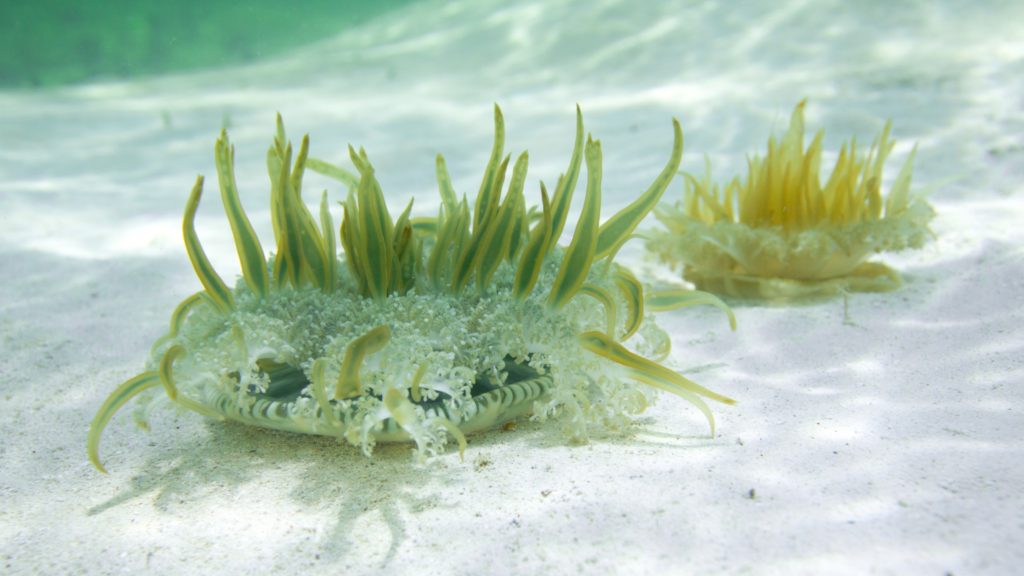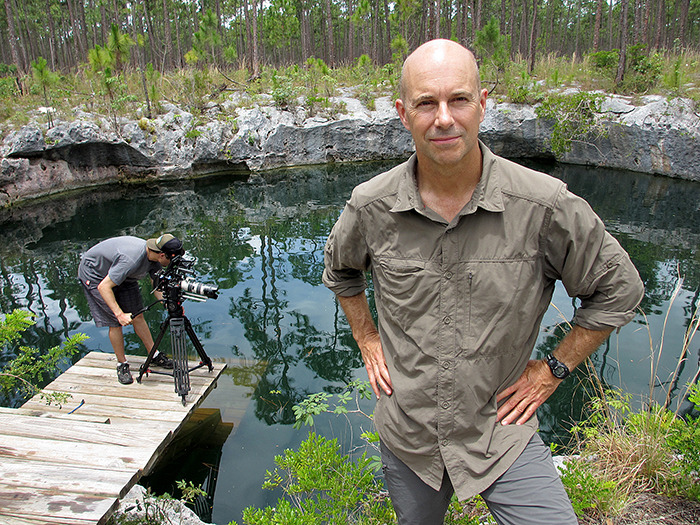This week’s blog post comes from Dr. Elizabeth (Betsy) Stoner who provided loads of information and logistical support to our latest project. She made an amazing natural history discovery during the production of Bahama Blue and we asked her to tell us what happened.
Betsy reports:
One of the greatest thrills a scientist can have is discovering something “new” in the natural world, such as stumbling across an undocumented species, or witnessing a never-before-seen animal behavior. Though this rarely occurs, I had the fortune to make a discovery regarding two unpopular animals: jellyfish, and venomous worms.

During the filming of “Bahama Blue”, the Parallax team and I were documenting the mangrove jellyfish (Cassiopea spp.), also known as the upside-down jellyfish due to its unique life history orientation.
Although these jellyfish are important animals in mangrove ecosystems, human disturbances can cause these jellyfish to bloom, or increase in abundance, potentially harming other marine animals and plants. A predator could help keep Cassiopea densities in check, but to date, no animal had been recorded killing these jellyfish! However, during filming in April 2014, as I observed the behavior of a Cassiopea that had settled to the bottom of a mangrove-lined tidal creek on Abaco Island, The Bahamas, an extremely large bristle worm appeared out of the crevices of the coral bedrock and proceeded to devour the jellyfish.
Over the course of the next twenty minutes, several more massive worms appeared and joined the feast, leaving no trace of the jellyfish. This remarkable and dramatic event was captured on film by the Bahama Blue team, which I subsequently documented in following months during a jellyfish feeding experiment. One theory as to why the worms eat the jellyfish? The worms may incorporate venom from stinging cells found inside the bodies of jellyfish into their own tissues as a defense against their predators. This discovery and the follow-up experimental work was recently featured in the May 2015 Volume of Frontiers in Ecology and the Environment.
Here at Parallax Films we couldn’t be prouder of Betsy and her exciting new research discoveries. We wish her every success in her future work. You can learn more about Betsy on her website.
Dr. Elizabeth (Betsy) Stoner is a marine ecologist and jellyfish expert. Her research broadly focuses on human-driven benthic jellyfish blooms and how they influence other animals and plants in coastal marine ecosystems. Most of her research takes place in The Bahamas, where she is happily nestled in mangrove forests and seagrass beds on a regular basis. When she isn’t getting stung by jellyfish or handling venomous bristle worms, she can be found working in the urban jungle of Miami, FL, helping students who are underrepresented in the sciences pursue their dreams of becoming professional scientists.

